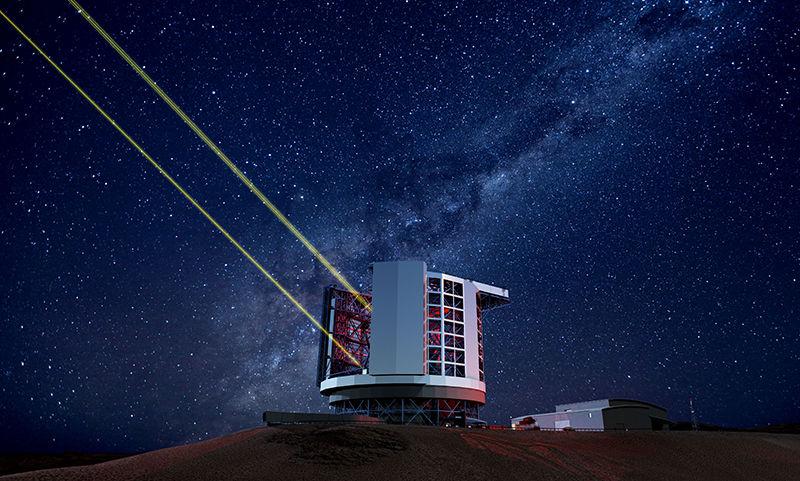Texas A&M University continues to play a huge part in an endeavor that will revolutionize the field of astronomy, as the construction of the world’s largest telescope has recently reached another milestone.
The Giant Magellan Telescope will be the largest telescope in the world when it is completed, at 82 feet long. Currently, the largest telescope in the world is roughly 32 feet long. When it sees first light, the GMT is projected to be 10 times stronger than the Hubble Space Telescope.
“The GMT is one of three next generation telescopes that are extremely large,” said Dr. Nicholas Suntzeff, astronomy professor at A&M.
As a result of this substantial size increase, six times more light will be collected by the telescope and astronomers will be able to detect much fainter objects than previously possible.
On June 3, the GMT Project Office announced that it had accumulated over $500 million in contributions from its 11 international partners, including Texas A&M, and that construction has been officially approved.
“The plans for the telescope have existed for many years, but now they will finally be able to start putting the plans to use,” said Jennifer Marshall, assistant professor in the A&M physics and astronomy department.
Suntzeff said many scientific goals for astronomers will become attainable with the construction of the telescope, including two potential science projects. One of these projects, Suntzeff said, is the discovery of life on planets outside the solar system.
“We know of thousands of exoplanets, and we would like to know if any of them have life,” Suntzeff said. “We can only do this with a very big telescope because we have to capture light of a planet around a star which is very faint.”
The GMT could make this a reality, Suntzeff said.
Suntzeff said another big goal the GMT will aim to accomplish is to study the formation of the oldest galaxies in the universe.
“Telescopes are like time machines,” said Suntzeff. “Light takes time to travel, so the farther you look in the universe the younger it is.”
Texas A&M’s participation in bringing the GMT to the threshold of construction is due in large part to late George Mitchell, whose early donations to the project represent a sizable fraction of the total cost of the telescope, which is approximately $1 billion.
In a statement in a TAMU Today article in March, A&M Chancellor John Sharp said A&M’s investment ensures that A&M astronomers play key roles in breakthrough discoveries that result from the telescope.
“Support for this important endeavor gives us a major boost toward establishing Texas A&M as a top institution in national and international astronomical research and instrumentation,” Sharp said in the article.
Marshall said currently, researchers at Texas A&M are building one of two instruments that will be used in the telescope. Marshall and Darren DePoy are leading the construction of an instrument known as GMACS — a wide field, multi-object, optical spectrograph.
“GMACS will be able to detect and analyze various spectra of light from potentially hundreds of objects at once and it will aid it the study of some of the faintest and most distant objects in space,” Marshall said.
Building the largest telescope in the world is no small undertaking, Suntzeff said. The GMT will have seven mirrors, each 8.4 meters in diameter, and each mirror takes at least two years to build.
“Our target date for the use of the telescope is the year 2022,” Suntzeff said. “There will be light going through the telescope before that, but we hope to have regular operations going by that time.”























